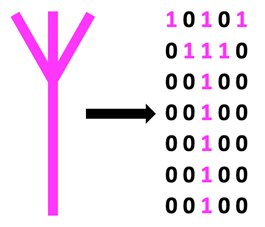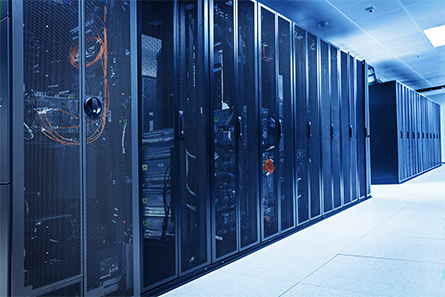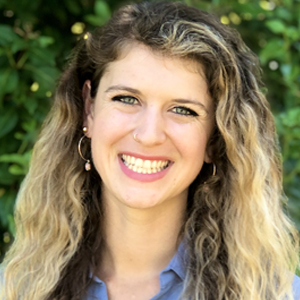
Artists, technologists bring data storage to life
The first time DNA was used for data storage was an art project. In 1996, Joe Davis’ work titled “Microvenus” was published in Art Journal. The article described how he first converted the Germanic rune used to represent life and the female earth into binary code: a five-by-seven bitmap of ones and zeros. Subsequently, this was converted into a short DNA sequence to be put into living Escherichia coli cells.
This piece of art was left to reside in the E.coli. Still, it was a first step into a field that can help address the heavy climate impact of data storage. Instead of hard drives, data can be put into DNA by converting binary code into the four-letter nucleotide code. Today, other artists, bioengineering researchers and commercial stakeholders are working to make this technology as widespread as silicon chips for storing information.

Humans constantly are piling on to our data load. Saved emails, photos, medical records, browsing history, backups of all this data — it all has to go somewhere, and it takes a toll on the environment. By 2025, data generated globally is expected to reach 180 zettabytes, equal to 180 billion standard external hard drives that can hold 1 terabyte of data. Exabyte-scale data storage centers are environmentally and economically expensive. They take up significant space and require megawatts of energy and hundreds of millions of dollars to maintain. Additionally, scarce materials like silicon are required to manufacture the current data storage infrastructure. However, the need for data storage and the reality of its growth rate aren’t going away. Ultimately, existing data storage technologies like tape and hard drive disks can’t scale up to meet the impending demands — and if they could, the climate cost would be unsustainable.
“Even if you ignore the economics of the situation, it’s gonna break,” said Steffen Hellmold, the senior vice president of business development for data storage at Twist Bioscience, a synthetic biology company developing technology that overcomes inefficiencies and enables cost-effective, rapid, precise, high-throughput DNA synthesis and sequencing. Twist is also one of the founding members of the DNA Data Storage Alliance. The alliance, established in 2020, includes organizations from across industry and academia who are committed to harnessing DNA to alleviate the digital data storage burden. The group aims to educate the public about DNA data storage technology and plans to establish industry standards as the technology progresses.

say that DNA could be a more sustainable alternative.
Jeff Nivala, a research assistant professor in the Allen School of Computer Science and Engineering at the University of Washington, said that DNA is advantageous for data storage because it is “super dense,” allowing information to be stored without taking up much space. Additionally, DNA is incredibly durable, making it less energy intensive to maintain than current data storage centers. Nivala went on to say that DNA is “eternally relevant.” Humans always will have reasons to read and write DNA, so storing information in this way does not run the risk of the language becoming outdated.
Hellmold from Twist noted similar benefits and said, “One of the wonderful things about DNA is that it has tremendous longevity. The longer you want to retain the data, the better DNA is for it.” Because reading and writing DNA is still slow and expensive, for now, the best use of DNA storage will be for information that needs to be retained for long periods but not accessed often, such as big science data sets or health care records. Hellmold explained that another use is embedding DNA onto objects for labeling and record keeping. Nivala suggested some examples of how DNA labeling could be used, such as embedding DNA into paint to confirm that a piece of work is authentic. The technology also could be used to authenticate the source of food or other environmental resources, which could support more sustainable resource collection and distribution.

to the possibility of storing data in DNA.
Since the creation of “Microvenus,” scientists and entrepreneurs never have been the only ones pushing DNA data storage forward. A more recent art project imagines taking this technology a step further. The Grow Your Own Cloud team, including Cyrus Clarke and Monika Seyfried, invited people to a flower shop to encode their data, such as a picture of a loved one, into DNA and put it into a plant. At the event, participants learned about the concept of storing information in DNA and the possibilities it could open up. At the genesis of the project, it was mostly a thought experiment, and no data actually was being stored in plant DNA, but the project since has become more grounded in science with Nivala’s help. Nivala learned about this art project when Clarke and Seyfried gave a public talk and soon became an advisor for the ongoing project. He since has contributed to several past exhibitions including SXSW 2020, Ars Electronica 2021 and Biennale Warszawa 2022 and upcoming exhibitions at ZKM and the Telefonica Foundation.
Nivala said that, at least for now, using DNA inside of plants is not necessarily more beneficial than using pure synthetic DNA for data storage. However, being able to store data inside of plants sets up potential for using plants to record new information about their environment. For example, cities all over the world already are filled with sensors monitoring factors like air pollution and water quality. One possibility is to replace these sensors by building biosensors into plants, which could store information about their environment inside of their own DNA for long periods. Additionally, cells are natural storage containers for DNA. Understanding how to move digital data into DNA and then into an organism could be used to expand and adapt DNA data storage technology. Researchers might incorporate plants or bacteria optimized for unique and extreme environments. But to reach this future of biologically contained data, more research is needed at each level of development.
From Twist, Hellmold, along with the senior vice president of corporate affairs, Angela Bitting, and DNA data storage senior director of product management, Daniel Chadash, talked about what they and others members of the DNA Storage Alliance would need to translate DNA storage into more common use. They said that they need more people with interdisciplinary backgrounds who understand both conventional data storage technology and biology. Ultimately, Hellmold said, all areas need more researchers to help reduce the cost and increase the efficiency of reading, writing and storing DNA. There is also work being done to automate all of these steps and scale up existing technology affordably. Alongside the ongoing engineering and research efforts, technology standards need to be established, biosecurity considered and an ecosystem of awareness built.
Hellmold said that science policy can help incentivize pushing this technology forward. For example, in 2019, the Office of the Director of National Intelligence launched the Intelligence Advanced Research Projects Activity (IARPA) Molecular Information Storage (MIST) program, which seeks to use sequence-controlled polymers like DNA to store digital information.
It won’t completely replace other forms of data storage soon, but DNA storage is well suited for archiving data, offers a greener alternative to data centers, and it is on its way thanks to the intersection of scientists, artists, investors and policymakers.
Enjoy reading ASBMB Today?
Become a member to receive the print edition four times a year and the digital edition monthly.
Learn moreGet the latest from ASBMB Today
Enter your email address, and we’ll send you a weekly email with recent articles, interviews and more.
Latest in Science
Science highlights or most popular articles

Fueling healthier aging, connecting metabolism stress and time
Biochemist Melanie McReynolds investigates how metabolism and stress shape the aging process. Her research on NAD+, a molecule central to cellular energy, reveals how maintaining its balance could promote healthier, longer lives.

Mapping proteins, one side chain at a time
Roland Dunbrack Jr. will receive the ASBMB DeLano Award for Computational Biosciences at the ASBMB Annual Meeting, March 7–10, just outside of Washington, D.C.

Exploring the link between lipids and longevity
Meng Wang will present her work on metabolism and aging at the ASBMB Annual Meeting, March 7-10, just outside of Washington, D.C.

Defining a ‘crucial gatekeeper’ of lipid metabolism
George Carman receives the Herbert Tabor Research Award at the ASBMB Annual Meeting, March 7–10, just outside of Washington, D.C.

The science of staying strong
Muscles power every movement, but they also tell the story of aging itself. Scientists are uncovering how strength fades, why some species resist it and what lifestyle and molecular clues could help preserve muscle health for life.

Bacteriophage protein could make queso fresco safer
Researchers characterized the structure and function of PlyP100, a bacteriophage protein that shows promise as a food-safe antimicrobial for preventing Listeria monocytogenes growth in fresh cheeses.

